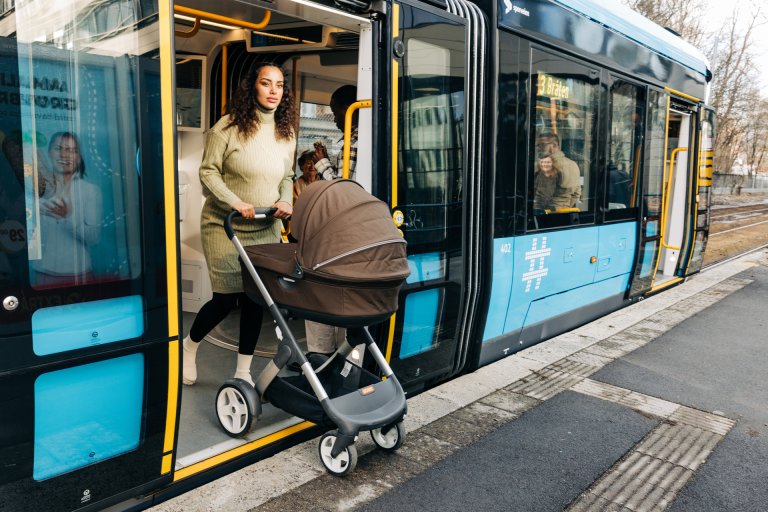On 13 September 2023, the members of the European Parliament voted to strengthen the legal framework to ensure air quality in European cities in line with the WHO limits. The new legislation is a leap in the right direction, even though the Parliament decided to postpone the commitment to the World Health Organization's recommended guidelines from 2030 to 2035.
Widespread problem
Although fast-growing cities in countries like China and India were heavily associated with air quality problems for the past few decades, the issues are popping up widely. A recent example from this summer was New York City, which in June 2023 became the world's most polluted city, due to air currents bringing pollution carried from heavy wildfires in Canada. (Source: Forbes (2023) Here in Europe, we face similar issues. See interactive map that showcases the air quality in Europe compared to the World Health Organization (WHO) limits
Visible and invisible harm
Poor air quality isn’t always visible to the human eye. Sometimes, tiny harmful particles and odourless gases can pollute the air in cities, invisibly and without residents detecting even a whiff of the problem. At other times, thick, highly visible smog chokes cities across the globe.
Smog comes in many colours and degrees of severity, depending on the source. Some of the most common sources of air pollution are forest fires, industrial facilities, household combustion tools, car exhaust fumes, and even particles scattered by the wear and tear of tires on roads. The invisible air pollution might be just as dangerous for human health, since the smallest particles cause the most damage to human health.
According to the European Environment Agency, Air pollution is the single largest environmental health risk in Europe and a major cause of premature death and disease. The latest estimates by the European Environment Agency (EEA) show that fine particulate matter (PM2.5) continues to cause the most substantial health impacts. (Source: European Environment Agency (2023))
The list of diseases that can occur due to both short- and long-term exposure to air pollution is long, including stroke, chronic obstructive pulmonary disease, trachea, bronchus and lung cancers, aggravated asthma and lower respiratory infections, type 2 diabetes, obesity, systemic inflammation, Alzheimer’s disease and dementia #2. As a result, every single year, 300,000 people in the EU die prematurely due to poor air quality. (Source: European Environmental Bureau (2023)) More breathable air doesn't just save lives – it also reduces long-term diseases that weigh heavily on national health budgets.
Improvements in Oslo
An example of air pollution measurements from Oslo, Norway's capital, shows a positive trend of improved air quality for the past twenty years. Interestingly, the shutdown that took place during the Covid-19 pandemic caused a worsening of air quality. Presumably, the uptick in use of personal vehicles, alongside a spell of dry days, cast more fine debris from roads into the air. In 2020 and 2021, the coronavirus measures reduced emissions, but from 2021 to 2022 the volume of traffic increased.
Oslo Municipality reports that "the decrease in the level of particulate matter since the early 2000s is due to targeted measures to reduce particulate matter from roads, like fees for spiked tires, environmental speed limits and dust suppression of the roadway. In recent years, levels of particulate matter have been relatively stable." (Source: Oslo Kommune)
One fascinating target is for Oslo to become the first zero-emission city in the world by 2030. (Source: The Local (2022)) The trajectory seems to be going according to plan, as Oslo hopes to have an all-electric public transport network by the end of 2023. While emissions and noise reduction are the main targets for Oslo Municipality, it turns out that the electric buses have lower maintenance costs and operation costs. All the city's 87 trams will be upgraded by 2024. (Source: Fremtidens Byreise (2023)

The brand-new trams are manufactured by Construcciones y Auxiliar de Ferrocarriles, or CAF for short, a Spanish company that produces railroad cars and components. CAF is a holding in the Storebrand Smart Cities Solutions fund. Furthermore, a subsidiary of CAF called Solaris produces many of the electric buses that can be seen in Oslo. By the end of this year, all 450 of Oslo's city buses will have shifted from diesel to electric power.
BYD, a Chinese automaker, is another Storebrand Smart Cities holding that has delivered electric buses to Oslo. The passenger ferries in Oslo have been electric since 2021, though this might have slipped under the radar for most residents. While measures to improve the safety and availability of bike routes have been unpopular with car drivers, they’ve undeniably improved the attractiveness of Oslo for bikers and pedestrians.

Investment Implications
Clean air is crucial for human health and well-being and goes hand in hand with low emissions. There are strong drivers for growth in the business segments that deliver products and services to enable electric mobility. Companies whose business models depend on the future mobility solutions could potentially see long term profitability when cities worldwide showcase increased interest, demand and most importantly financial muscles to reach their zero emission targets.
Segments that seem to benefit mostly are public and electric transport, with the associated charging infrastructure. Micromobility is also a market segment that has boomed for the past decade, including electric bicycles as a replacement for private vehicles and trucks for small cargo deliveries. Cargo bikes have proved to be an exciting and flexible addition to urban goods delivery and quicker everyday logistics. Tailwinds are also expected for zero-emission buildings and infrastructure and smart energy management systems.
It is encouraging to see that progress is being made and that measures intended to improve air quality provide results. In times of turbulence, it may also be useful to note that what are initially often unpopular decisions, could lead to quick results that benefit all inhabitants. Perhaps there's some truth in the saying: "slow is smooth, smooth is fast"?
Check out our previous Solution Spotlight blogs on air quality:
- 2022: Time for a blue-sky strategy?
- 2021: Air quality issues




